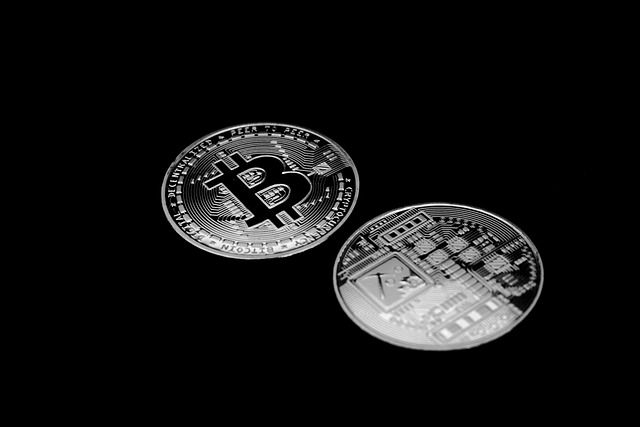What Is Altcoin Season in Crypto: A Complete Guide for Traders
Author: Jameson Richman Expert
Published On: 2025-10-25
Prepared by Jameson Richman and our team of experts with over a decade of experience in cryptocurrency and digital asset analysis. Learn more about us.
What is altcoin season in crypto? In short, altcoin season refers to a period in the cryptocurrency market when alternative coins (altcoins) significantly outperform Bitcoin in price gains, liquidity flows, and market attention. This guide explains the meaning, causes, historic examples, measurable indicators, trading strategies, and risk-management tactics you need to identify and act during an altcoin season. You’ll also find practical checklists, tools, and reputable resources to deepen your research and execute a disciplined plan.

What does "altcoin season" mean?
Altcoins are all cryptocurrencies other than Bitcoin. The term “altcoin season” describes a market phase in which altcoins collectively rise faster than Bitcoin (BTC), often producing outsized returns for early buyers. During altcoin seasons, investors rotate capital away from Bitcoin into smaller-cap projects, decentralized finance (DeFi) tokens, Layer-1 blockchains, NFT-related tokens, and meme coins. This rotation can create a broad-based rally across many tokens, increasing the number of 10x or 100x performers compared to periods where Bitcoin dominates price action.
For a basic definition of altcoins and their varieties, see the Altcoin article on Wikipedia for foundational context: Altcoin (Wikipedia).
Why altcoin seasons happen — the drivers
Altcoin seasons don’t happen at random. Multiple market, macro, technical, and social drivers tend to synchronize to create the conditions for an altcoin rally:
- Falling Bitcoin dominance: Bitcoin dominance (BTC.D) represents Bitcoin’s share of total crypto market capitalization. A notable decline in BTC.D often signals capital moving into altcoins.
- Abundant liquidity and risk-on sentiment: Low interest rates, monetary easing, or inflows from new retail and institutional buyers can push risk assets higher. Investors seeking higher returns rotate into altcoins.
- Successful Bitcoin rally that cools off: Sometimes a prior BTC rally creates profit-taking and rotation into altcoins as traders seek higher yields.
- New narratives and technological upgrades: Emerging use cases such as DeFi, NFTs, Layer-2 scaling, or new consensus models often attract speculative capital to tokens powering these ecosystems.
- Derivatives and leverage: Favorable conditions in derivatives markets (futures, perpetuals) can amplify altcoin moves when traders use leverage to chase momentum.
- Social and media amplification: Viral narratives, influencer endorsements, and repeated coverage on social channels can accelerate interest in specific tokens or sectors.
Key indicators to identify altcoin season
To spot altcoin season early and avoid false starts, monitor a combination of on-chain and market indicators:
- Bitcoin Dominance (BTC.D): Watch for sustained declines in BTC.D. A falling BTC.D alongside rising total market cap usually indicates altcoin inflows. Use TradingView or CoinMarketCap charts to track this metric.
- Altcoin Market Cap vs Total Market Cap ex-BTC: Measure the percentage share of altcoins in the total crypto market. A rising share supports an altcoin season thesis.
- Top Altcoin Performance vs BTC: Compare price performance of major altcoins (ETH, BNB, SOL, ADA) in BTC-denominated terms — e.g., ETH/BTC. Consistent outperformance against BTC is a strong signal.
- Volume and Liquidity Spikes: Look for rising trading volumes on altcoins across centralized exchanges and DEXs. Volume confirms conviction and reduces the risk of pumps from low-liquidity tokens.
- Number of New All-Time Highs (ATHs) Among Altcoins: A broad set of tokens making new ATHs is a classic hallmark of a mature altcoin season.
- On-Chain Activity: Increasing active addresses, transaction volume, and Total Value Locked (TVL) in DeFi protocols often precede or accompany altcoin rallies. Use Glassnode, Santiment, Dune Analytics, or DefiLlama for these metrics.
- Social/Sentiment Measures: Rising search interest (Google Trends), Twitter/X mentions, Reddit activity, and NFT sales can show narrative strength.
- Derivatives Metrics: Open interest and funding rates on altcoin futures rising, especially relative to BTC, point to leveraged speculative interest.
Reliable data sources
- CoinMarketCap and CoinGecko — market caps and rankings.
- TradingView — custom BTC.D and altcoin vs BTC charts.
- Glassnode and Santiment — on-chain metrics and sentiment.
- DefiLlama — TVL across DeFi protocols.
- Fear & Greed Index — helps judge market sentiment (see alternative.me’s index).

Historical altcoin seasons — lessons from the past
Studying past altcoin seasons reveals patterns and caveats:
2017: ICO boom and mass speculation
The 2017 cycle saw thousands of ICO tokens surge on hype and speculation. Many projects lacked fundamentals and eventually collapsed, but a handful of projects that built real utility survived and matured. Lesson: speculative mania can generate spectacular returns but also extreme risk and many scams.
2020–2021: DeFi summer and NFT craze
The DeFi surge of 2020 (“DeFi Summer”) and NFT mania of 2021 produced a broad altcoin season. Tokens tied to smart contract platforms (Ethereum, BSC/BNB Chain, Solana, Avalanche, Polkadot) and DeFi protocols outperformed because of real user activity and TVL growth. This cycle emphasized the value of utility and network effects.
Late 2023–2024: Layer-2 and AI narratives (emerging)
Recent cycles saw rotation into Layer-2 scaling solutions, interoperability projects, and tokens related to AI and gaming narratives. These periods show how new narratives can drive fresh altcoin interest.
For a contemporary list and deep profile of popular altcoins and their use cases, see this in-depth exploration of leading digital assets: Popular Altcoins — In-Depth Exploration.
Altcoin season vs Bitcoin season — how they differ
Bitcoin season and altcoin season are cyclical opposites:
- Bitcoin season: Bitcoin outperforms the majority of altcoins. BTC dominance rises as investors favor BTC’s perceived “safe-haven” status within crypto.
- Altcoin season: Altcoins outpace Bitcoin, often creating massively higher relative returns for selected tokens.
These phases can last weeks to many months. Traders aim to rotate between the two regimes by monitoring BTC.D, market leadership shifts, and on-chain signals.
How to trade and invest during altcoin season — practical strategies
Altcoin seasons reward disciplined strategies and rigorous research. Here are several approaches from conservative to aggressive:
1. Core and explore — balanced allocation
Keep a core portfolio of established assets (e.g., BTC and ETH) and allocate a smaller “explore” portion for higher-risk altcoins during alt seasons. Example allocation: 60% core, 30% growth (established altcoins), 10% high-risk/meme/speculative bets.
2. Momentum trading
Target altcoins showing strong volume breakouts and positive on-chain signals. Use technical entries (e.g., breakout above consolidation, moving average crossovers) and set tight stop losses to protect capital.
3. Swing trading
Capture meaningful price swings over days to weeks. Place entry near support or after retest, set profit targets, and size positions to manage risk.
4. Yield and staking
Some altcoins offer staking rewards, liquidity mining, or yield through DeFi. For investors who want yield and hodling exposure, staking can improve effective returns while you wait for price appreciation. Always evaluate counterparty and smart contract risk.
5. Dollar-cost averaging (DCA)
If you expect a prolonged altcoin season but want to reduce timing risk, DCA into select altcoins over weeks or months.
6. Use derivatives cautiously
Futures and perpetuals increase return potential but also risk. Derivatives are best reserved for experienced traders who use proper position sizing and stop discipline.

Risk management and pitfalls during altcoin seasons
Altcoin seasons amplify upside and downside. Key risks to manage:
- Volatility: Rapid price swings can wipe out leverage positions. Use appropriate leverage or avoid it.
- Liquidity risk: Small-cap tokens can have thin order books and wider spreads, making exits difficult during reversals.
- Rug pulls and scams: Increased issuance and hype bring many fraudulent projects. Do deep due diligence (team, code, audits, tokenomics).
- Impermanent loss: Providing liquidity in AMMs can expose you to IL if token prices diverge dramatically.
- Tax & compliance: Frequent trading has tax implications. Track trades and consult a tax professional.
Always use position sizing, stop losses, diversification, and a clearly defined plan before entering trades.
Practical checklist to determine if an altcoin season is underway
- Is BTC.D falling over several weeks? (Confirm on TradingView)
- Is altcoin market cap increasing relative to total market cap?
- Are top altcoins (ETH, BNB, SOL, ADA) showing strength vs BTC in BTC-pair charts?
- Are new altcoins achieving higher trading volumes and new ATHs?
- Is DeFi TVL, NFT sales, or on-chain active addresses increasing?
- Are derivatives open interest and positive funding rates concentrated in altcoins?
- Is social sentiment trending bullish for specific narratives (DeFi, L2, gaming, AI)?
- Have you done fundamental checks on projects you plan to buy (team, tokenomics, audits)?
Tools and platforms to use during altcoin season
Reliable tools improve the quality of your decisions:
- CoinMarketCap / CoinGecko — market cap, rankings, and token screener.
- TradingView — charting, BTC.D and pair charts.
- Glassnode / Santiment — on-chain and sentiment indicators.
- DefiLlama — DeFi TVL metrics.
- Etherscan / BscScan — contract verification and token transfers.
- News & Social — Twitter/X, Reddit, Telegram, and niche crypto news outlets.
If you need exchange accounts for trading or staking during an altcoin season, you can open accounts on reputable platforms:
- Register on Binance — large selection of altcoins and staking options.
- Create a MEXC account — good for discovering emerging tokens.
- Sign up at Bitget — derivatives and copy-trading tools.
- Open a Bybit account — derivatives and spot liquidity.

Case study: How to craft a simple altcoin-season trade plan
Below is an example trade plan for a disciplined altcoin-season approach.
- Thesis: BTC dominance has dropped from 55% to 45%; ETH/BTC is breaking out. Expect capital rotation into Layer-1 and DeFi tokens.
- Allocation: 50% BTC/ETH core, 35% mid-cap altcoins (BNB, SOL, AVAX, DOT), 15% speculative (new DeFi or L2 tokens).
- Entry rules: Buy core at market, add mid-cap on breakout with confirmation volume, enter speculative positions using limit orders after due diligence.
- Risk per trade: 1–2% of portfolio value on high-risk trades; 3–5% for mid-cap swing positions.
- Stop loss / exit: Place stop losses 10–20% below entry for high-risk coins; re-evaluate every 10–20% of gain. Take partial profits at predefined targets (e.g., 30%, 60%, 100%).
- Review cadence: Weekly review of performance, adjust allocations, and re-balance by selling winners into re-rallying BTC when BTC starts outperforming.
How long does an altcoin season last?
There is no fixed duration. Altcoin seasons have ranged from a few weeks to many months. The length typically depends on:
- Macro liquidity and investor risk appetite
- Strength and longevity of the narratives driving altcoins
- Whether capital continues to flow into newer, smaller projects
Because of this uncertainty, a flexible approach with defined exit rules is essential.
Common myths and misconceptions
- Myth: “Always buy the hottest small-cap token in an altcoin season.”
Reality: Most small-caps fail or suffer extreme drawdowns. Prioritize due diligence and liquidity. - Myth: “Altcoin season means all altcoins will rally.”
Reality: Only a subset usually performs strongly — typically those with liquidity, utility, and momentum. - Myth: “If Bitcoin pauses, all altcoins automatically soar.”
Reality: Altcoin strength often requires specific narratives or on-chain activity in addition to a cooling BTC rally.

Where to learn more and follow market analysis
Use reputable market analysis and project deep-dives to refine decisions. For detailed market analysis and forecasts that can complement your altcoin season strategy, review expert market commentary such as this in-depth market analysis on Bitcoin direction and strategic investor insights: Is Bitcoin Going Up or Down Today in USD? — Market Analysis. Also, for forecasts about Bitcoin price and how BTC trends may impact altcoin rotation, see this market forecast analysis: Bitcoin Price Forecast 2025 — Polymarket Expert Insights.
For a rundown of popular altcoins and their use cases (helpful when choosing altcoin candidates), refer to this dedicated altcoin exploration: Popular Altcoins: In-Depth Exploration.
High-authority resources worth bookmarking
- Altcoin — Wikipedia (foundational definitions)
- Altcoin — Investopedia (educational finance lens)
- Bitcoin Dominance explained — CoinDesk
- DefiLlama — DeFi TVL data
- CoinMarketCap — market capitalization and token rankings
Frequently asked questions (FAQ)
Q: How can I tell if altcoin season has started?
A: Look for a sustained decline in BTC dominance, rising altcoin market cap share, altcoins outperforming BTC in BTC-pair charts, rising volume, and on-chain activity increase. Confirm with at least three signals rather than a single data point.
Q: Which altcoins typically lead during altcoin season?
A: Historically, Ethereum and large-cap smart contract platforms (BNB, SOL, AVAX, ADA) lead early. Mid-cap DeFi and Layer-2 tokens often follow, while small-cap speculative tokens can explode later in the cycle.
Q: Is altcoin season safe for new investors?
A: Altcoin season increases risk. New investors should prioritize education, risk management, low leverage, and only allocate a portion of capital to speculative altcoins.

Final thoughts — a disciplined approach wins
Understanding what is altcoin season in crypto helps you recognize market regime shifts and allocate capital accordingly. Altcoin seasons can offer outsized returns, but they also present elevated risk from volatility, liquidity issues, and scams. Use objective indicators (BTC.D, market cap flows, volume, on-chain metrics), apply disciplined risk management, and rely on credible research before committing capital.
If you want to deepen your strategy, consider building a trade plan that includes defined allocation rules, stop losses, and profit-taking targets. Use reputable exchanges for execution and safe custody — you can register on major platforms like Binance, MEXC, Bitget, or Bybit.
Stay analytical, avoid hype-driven decisions, perform your own research (DYOR), and adjust your plan as market conditions evolve. If you’d like, I can provide a tailored watchlist or a sample portfolio allocation for the current market regime — tell me your risk tolerance and time horizon and I’ll customize a plan.